[/caption]
Europe’s Jules Verne Automated Transfer Vehicle (ATV) successfully completed its six-month mission today with a controlled destructive re-entry over the South Pacific. Following a final de-orbit burn at 14:58 CEST which slowed its velocity by 70 m/s, the ATV entered the upper atmosphere at an altitude of 120 km at 15:31 CEST. It broke up at an altitude of 75 km with the remaining fragments falling into the Pacific some 12 minutes later. The break-up was monitored by two aircraft, a Gulfstream V, and a NASA DC-8. “The operations went perfectly; there was no hiccup at all.” said ESA’s mission director Alberto Novelli. “There is a very big feeling of accomplishment because the mission went perfectly from end to end. At the same time we are a little bit sad. The six months (of operation) were very intense and demanding, so there is a mixed feeling. But we are looking forward to start preparing for the following mission.”
Update: the first images from the re-entry have just been posted:
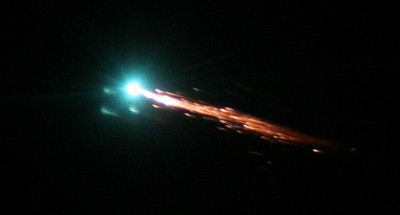
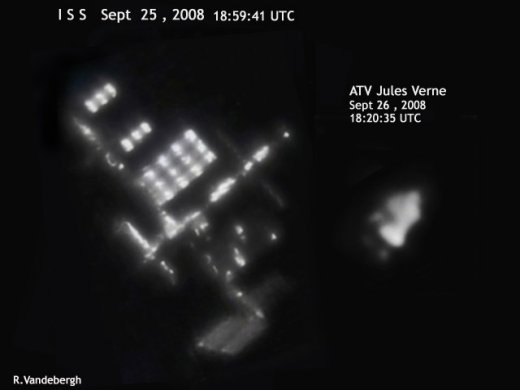
This first ATV launched on March 9, 2008 on an Ariane 5 rocket from Europe’s Spaceport in French Guiana. Named the Jules Verne, it delivered 6 tonnes of cargo to the International Space Station, and remained docked to the ISS for five months. During docked operations, it also performed a maneuver to help the ISS avoid a piece of space debris. The crew was able to offload 12 tonnes of waste into the Jules Verne, most of which should have been destroyed in the re-entry.
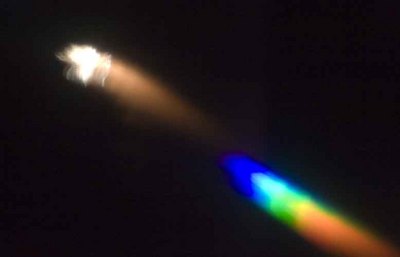
A group of researchers used imaging instruments and spectrographs on board the two aircraft to document the re-entry. Both aircraft are suited to flying at the high altitude needed to perform the observations (12 to 14 km). They measured the brightness of the fragments, obtained positional information and saw how the brightness of the vehicle changes over time, giving an indication of how the spacecraft is tumbling. The spectrograph measures emissions from the atmosphere as the re-entry occurs, which provides information of the flow of the atmosphere around the vehicle. As they analyze their data, they will also be able to see emissions from the vehicle and contents as they break apart, give a detailed understanding of what’s happening to the ATV as it re-entered the atmosphere.
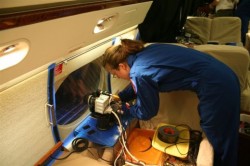
“Credit has to go to everyone involved in such a flawless mission.” said John Ellwood, ESA’s ATV Project Manager. “Not only to the ESA and industrial teams that brought the project to fruition, but also to the teams at the ATV Control Centre and around the world who have done a superb job while the spacecraft has been in orbit. This is truly a wonderful spacecraft, and vital to the continued service of the ISS following Shuttle retirement in 2010. I look forward to the launch of the next ATV, which is currently under production at EADS Astrium in Bremen, Germany.”
Sources: ESA, ATV Blog

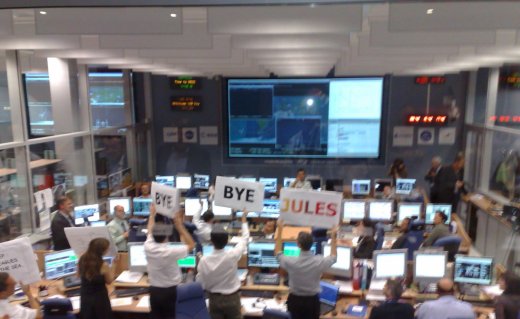
The time is ripe for the Space Junk Recycling Project, a public-funds non-profit organization dedicated to furthering space science and technology in education and in the public mindshare.